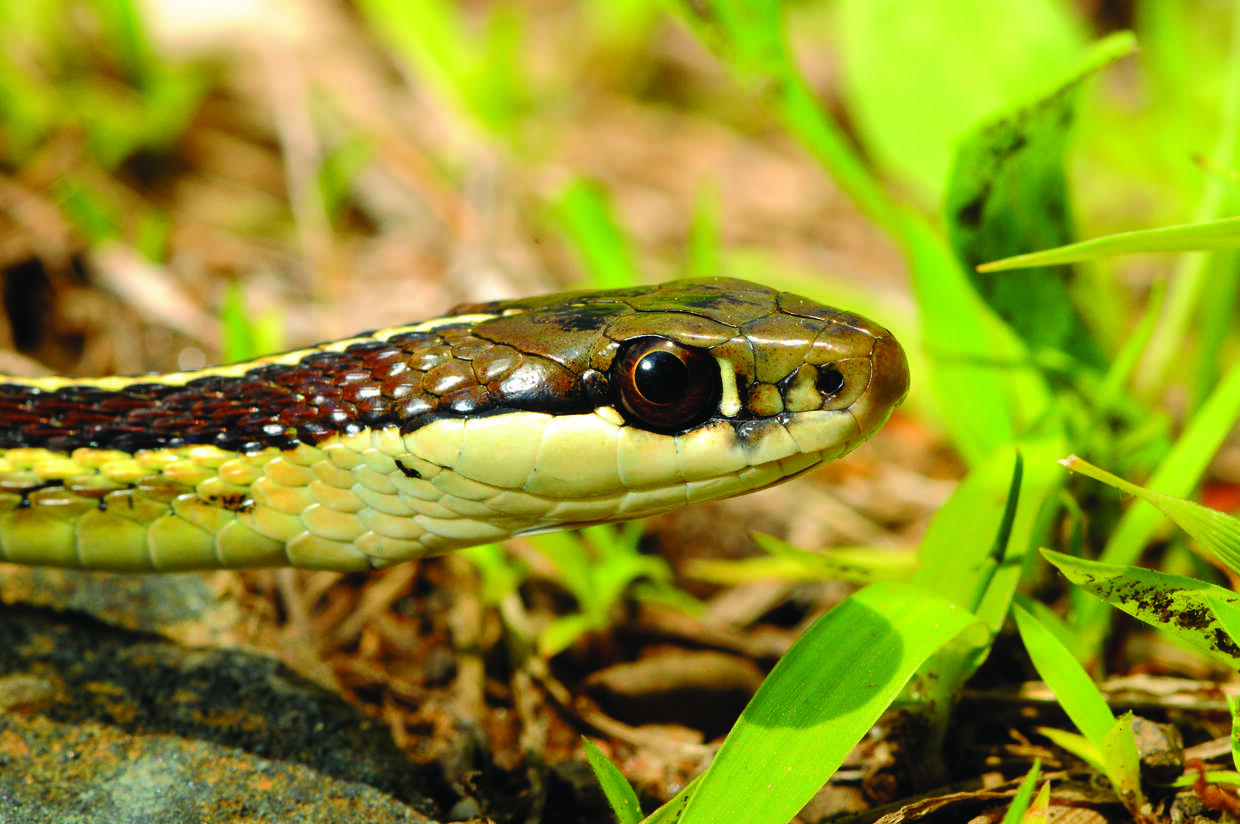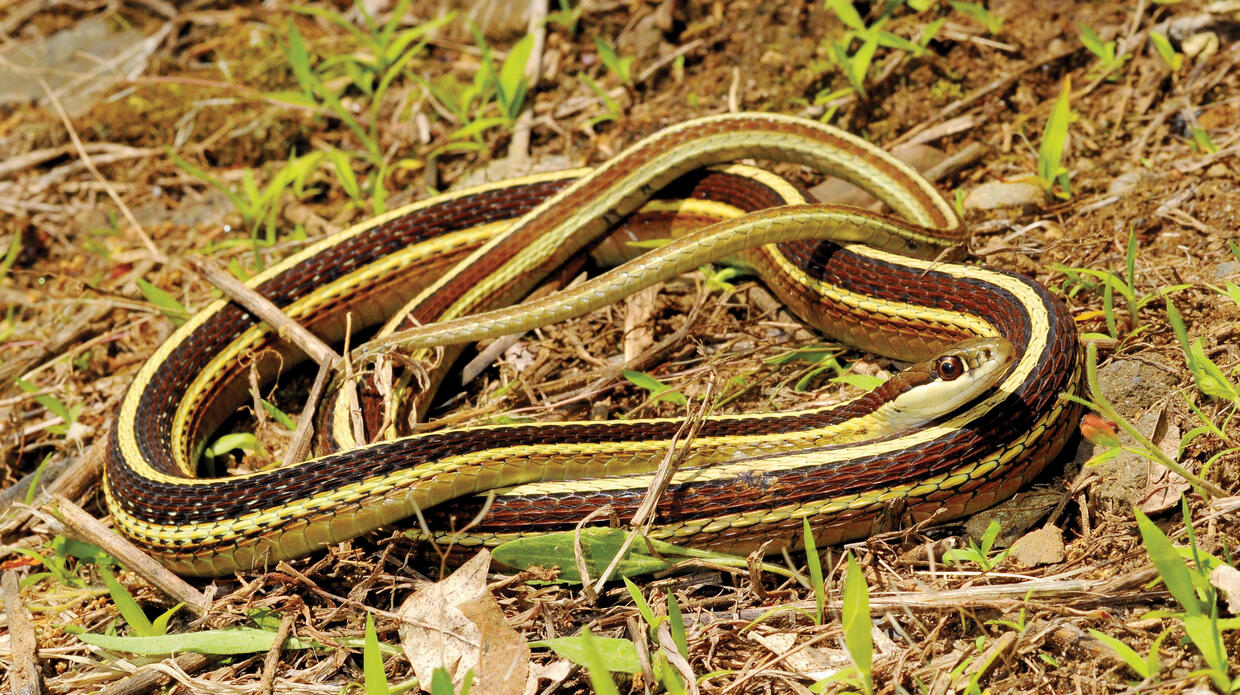Fast facts
Common name: Eastern ribbonsnake
Scientific name: Thamnophis sauritus
Range in MA: statewide
Conservation status: common, not listed
Fun fact: Exceptionally long tail accounts for one third of total body
Similar species: Common gartersnakes
Identification tips: Eastern ribbonsnakes distinguish themselves with longer tails, keeled scales, and three bold, yellow or yellowish-green stripes on a reddish brown background.
Description
Eastern ribbonsnakes have keeled scales and three bold, yellow or yellowish-green stripes of about equal width on a reddish brown back-ground. Yellow side stripes are located three to four scale rows up from the pale yellow or pale green belly. Scales of upper lip are unmarked. The tail is exceptionally long, accounting for about a third of the total length. Adults range in length from 18–36+ inches.
Habitat
Eastern ribbonsnakes live statewide. They bask in low shrubs and vegetation around the edges of shallow wetlands, ponds, and marshes. They also occasionally live in wet meadow and vernal pool habitats and in wetland environments that feature less competition from northern water snakes. They appear to be fairly gregarious, as multiple snakes can often be found in close proximity. When disturbed, they usually enter the water immediately and swim rapidly across the surface to hide in shoreline vegetation. They do not submerge.
Life history
Mating takes place in spring. Young are born alive in litters of 6–24 in August and September. Young are about 7–9 inches long. Eastern ribbonsnakes eat frogs, small fish, and salamanders.

